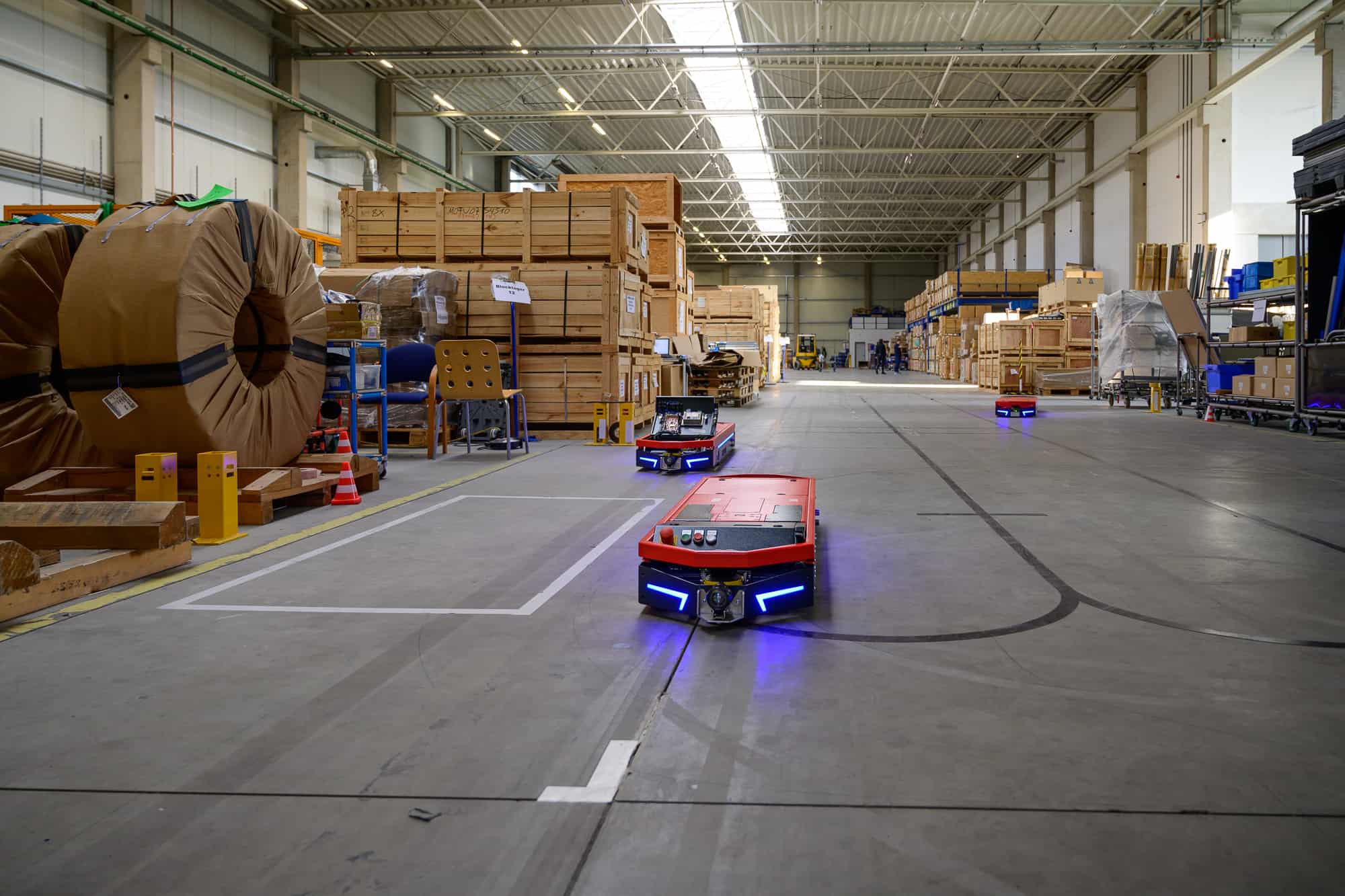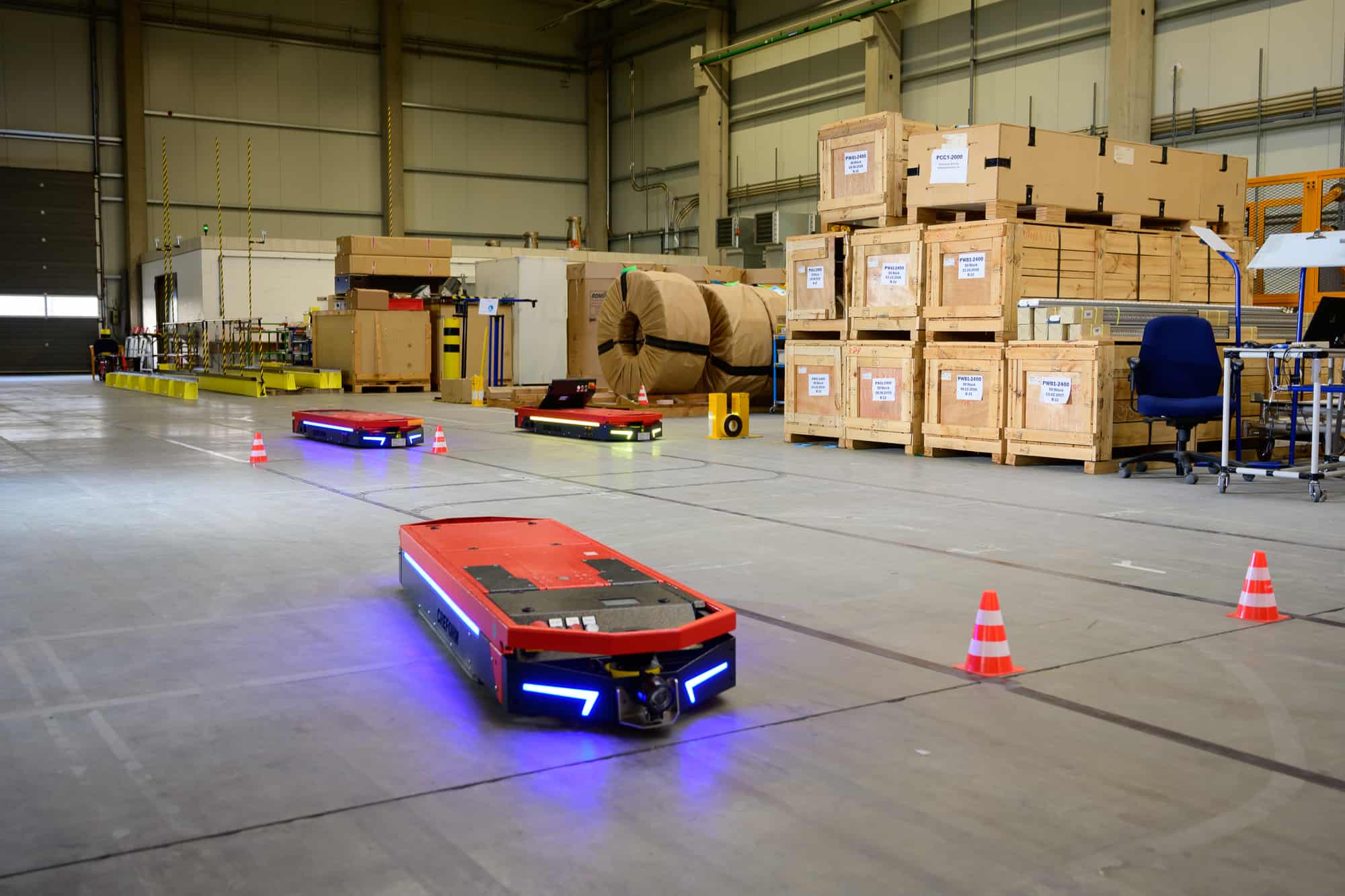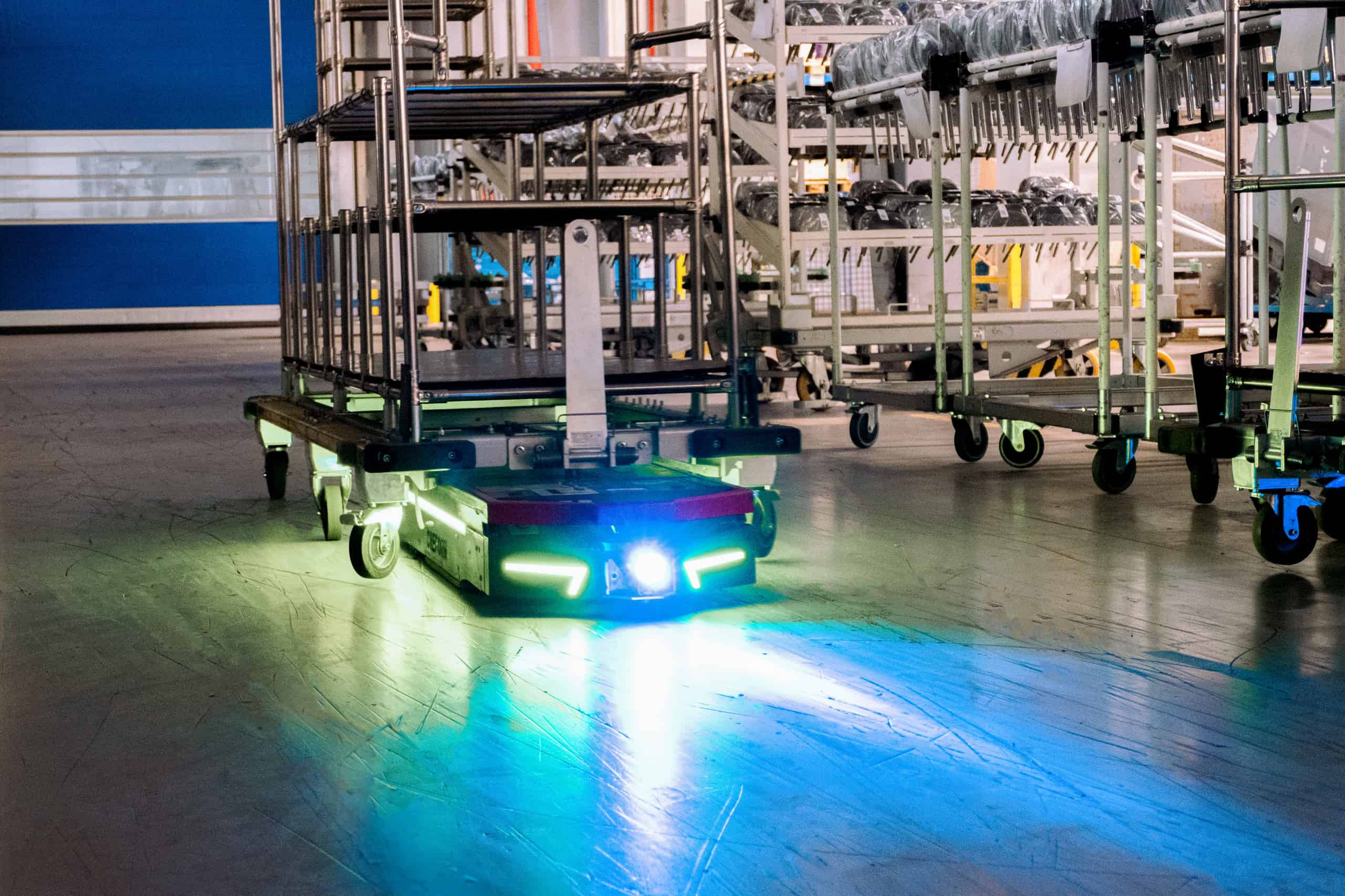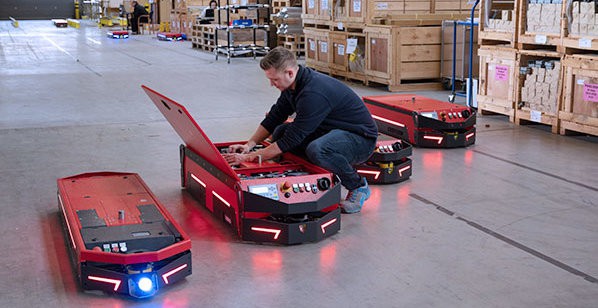Automated guided vehicles (AGVs) offer companies numerous advantages. They enable efficient material handling automation, reduce costs and improve material flow. In addition, AGVs offer: flexibility, scalability and increase occupational safety. Investments in this technology lead to an increase in productivity and competitiveness, while costs are reduced and customer satisfaction is enhanced. Overall, AGVs are a worthwhile investment for companies to optimize internal transport and achieve long-term benefits.
MARKET VALUE
The market value of automated guided vehicles has risen continuously in recent years and represents a significant area of investment for companies. According to statistics from Allied Market Research, the global market for driverless transportation systems was estimated at $5.21 billion in 2019. This is expected to rise to $13.52 billion by 2027.
These figures illustrate the immense growth potential of this sector and the opportunities available to companies investing in this technology. Driverless transport systems are revolutionizing the way goods and commodities are transported, enabling more efficient and cost-effective logistics processes. Investing in this technology is therefore crucial to ensuring the future viability of companies and remaining competitive.
ADVANTAGES OF AGV - AMR
AGVs enable optimized and automated material movement, increasing efficiency in production and logistics environments. They can work continuously and precisely, reducing bottlenecks and delays.
By using AGVs, companies can reduce their operating costs. Automation reduces the need for manual labor, minimizing labor costs. In addition, AGVs help reduce errors, damage and losses, which leads to savings.
AGVs are equipped with advanced sensors and safety systems to avoid collisions with obstacles and people. This helps improve occupational safety and reduces the risk of accidents in work environments.
AGVs are modular in design, which allows flexible adaptation to changing requirements. They can be easily expanded to handle increasing transport needs and can also be used in different environments.
The use of AGVs can optimize workflows and processes. Automation enables precise control of transport tasks, reduces downtime and allows better utilization of resources.


AGVs are equipped with energy-saving technologies. You can plan optimal routes and use efficient movement patterns to minimize energy consumption. This contributes to sustainability and the reduction of environmental impact.
AGVs operate continuously and can be used around the clock (24/7) without the need for breaks or rest periods. This increases productivity and shortens throughput times.
AGVs take over repetitive and monotonous tasks so that skilled workers can be deployed for more demanding and value-adding activities. This increases employee satisfaction and enables better use of their skills.
AGVs are equipped with advanced tracking and monitoring systems that enable real-time tracking of transported goods. This improves transparency in the supply chain and enables effective inventory control.
Automated guided vehicles are part of modern industry and advancing automation. By implementing them, companies position themselves for the future and remain competitive in an evolving business world.
AMORTISATION
The implementation of automated guided vehicles (AGVs) has the potential to revolutionize corporate workflows and increase both employee workload reduction and efficiency. It is important to emphasize that the goal of AGV deployment is not to replace the forklift operator, but to automate non-value-added activities. This allows professionals to be better utilized without wasting their skills on inefficient and monotonous tasks.
Although the investment volume for automated guided vehicles can be high in the initial phase, this technology is proving to be extremely profitable. Within a year of implementation, investments typically begin to pay for themselves and then contribute to significant cost savings. It should be noted, however, that the payback on AGVs depends on several factors, such as company size, work volume, and individual requirements.
Below is a sample calculation that provides a rough estimate of the payback of AGVs compared to forklifts. Please note that this table is only an example and actual figures may vary depending on the company and specific requirements. It is advisable to perform an individual analysis to obtain accurate and meaningful results.
AGV - CASE STUDY
| AGV – System | Forklift – System | |
|---|---|---|
| Material Handler/ Devices | 3 vehicles | 2 vehicles |
| Operators/ workers | 1 / shift | 2 / shift |
| Layers | 18 / weeks | 18 / weeks |
| Investment | ~130.000 € | 0 €* |
| Labor costs | 107.000 € / a | 213.500 € / a |
| Other current costs | 14.500 € | 37.000 € |
| Break Even Point (BEP) | 12.1 months | / |
| ROI after 5 years | 396% | / |
| Savings according to BEP | 129.000 € / a | / |
* Forklift trucks are already available in the company, therefore no investment is necessary.
This case study represents only part of the production. It does not show CREFORM’s entire cost structure.
There are three important steps to consider when planning an automated guided vehicle (AGV) project. First, environmental data is collected, including the deployment site, spatial infrastructure, and deployment conditions. This helps to understand the specific requirements of the site and adapt the AGV technology accordingly.
Next, the customer’s transport goods data are analyzed, such as the type of transport goods and the required transport aids. This information is critical to designing AGV routes and functions according to the customer’s requirements.
Finally, the analysis of the operational organization, including the material flow, the operating conditions and the interfaces to other areas of the company, is carried out. These steps make it possible to obtain a comprehensive picture of operational processes and ensure that AGVs can be seamlessly integrated into existing operations.
Once these three steps have been analyzed and worked out, we can make precise offers to our customers and help them decide how many vehicles should be deployed and to what extent or on which routes they should be used. Based on this information, we can then prepare the payback calculation and help the client evaluate the economic benefits and profitability of the project.
AGV - AMR

We will also classify our CREFORM AGV as AMR because they can both automate material handling processes and operate autonomously. For example, our free navigation AGV use sensors and other technologies to detect obstacles and follow predetermined routes freely and autonomously. In summary, the distinction between AGV and AMR is not always clear-cut and the two systems may overlap in capabilities and functions.
Forum FTS describes the topic in its “Leitfaden Autonomie V1.1“ as follows:
Where there used to be only AGVs and AMRs, today there are also AMRs, MRs, AGVs, IGVs and other terms that have largely sprung from marketing. In particular, the use of the terms autonomy / autonomous attempts to ascribe greater value and user benefits to new products with new functions. The lack of a generally accepted understanding of the terms automated, fully automated, autonomous, highly autonomous, and intelligent in the field of intralogistics leads to a multitude of offers that are difficult to compare with each other and, as a result, to misunderstandings and disappointed expectations among users.
We do not assume an either/or – AGV or AMR – but consider autonomous functions of a system with automated vehicles. So we are talking about more or less autonomous vehicles or vehicles with more or less autonomous functions.
Human & Robot
Our vehicles are designed to support employees by relieving them of heavy and monotonous tasks. Our goal is to keep employees healthy by reducing their stress and minimizing potential occupational risks. We see the vehicles as a way to strengthen collaboration between people and technology and create a safer, more efficient, and healthier work environment. Our vision combines innovation and humanity to bring the best of both worlds.
We strongly believe that technology should complement the world of work rather than replace people (professionals). At us, CREFORM Technik GmbH, the safety and health of the employee are the focus of our technological developments.

CONTACT
Do you have any questions? Write to us! We are looking forward to your message.